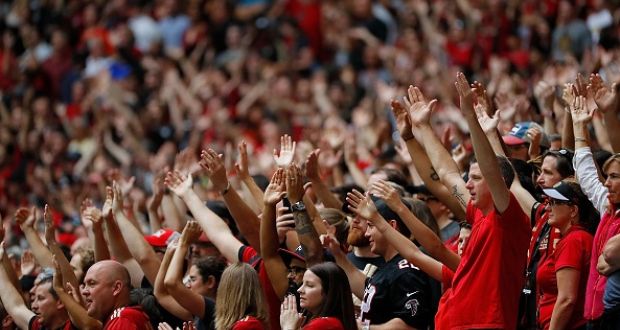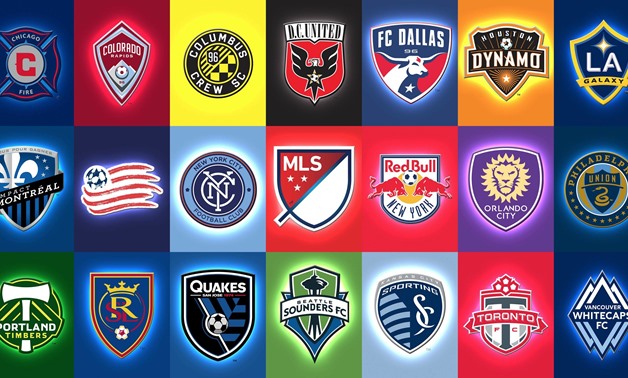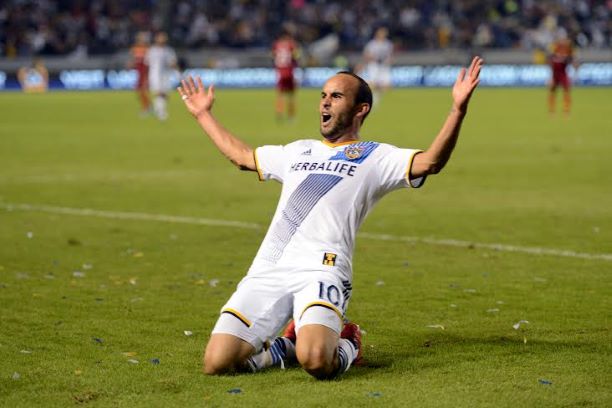Notes from the sideline: Cazorla symbol of Arsenal’s new found style
Notes from the sideline: Cazorla symbol of Arsenal’s new found style
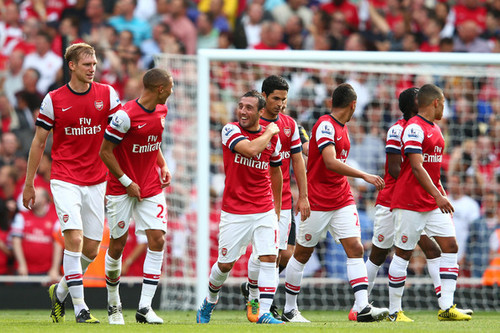

By Tim Palmer
The transfer of Santi Cazorla from Malaga to Arsenal underlined what has made Arsene Wenger such a favourite in North London. The Spanish playmaker is clever on the ball, with a cute first touch and a remarkable ability to link play and dictate the tempo of the game, the sort of artist that the Emirates has come to so greatly appreciate. For a player of his class - many saw him as the best player outside the top two in La Liga last season – the price of £12 million was a snip, as Arsenal benefitted from Malaga’s financial explosion to again find value in the transfer market. Wenger is a manager who sees the game as the systematic process of the collective, and Cazorla’s humble attitude both on and off the pitch serves to highlight this philosophy.
When Cazorla first arrived at Arsenal, the natural reaction was to presume he would take either a position as one of Arsene Wenger’s flexible three-man midfield or on the flank. “I came to play on the touchline, with the freedom to get inside,” Cazorla said in an interview with El Pais, he continued “I was surprised when I started in pre-season as a second striker. Wenger put me directly in the playmaker position.”
With a front three of Podolski, Gervinho and Walcott in support, Cazorla has excelled in every Premier League game this season, showcasing his verve and creativity as a subtle playmaker and taking on the responsibility for providing sophistication and balance to Arsenal’s attack.
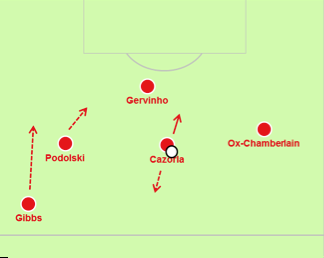
Quantifiably, Cazorla’s been a huge success: along with a goal and two assists he’s managed to contribute four key passes per game, ranking him 2nd in WhoScored’s statistical database. But even without statistics, the naked eye reveals the ease of his transition to the Premier League, fears of which were probably exaggerated, as Cazorla was the most fouled player in La Liga last season, suggesting he would already be used to physical play.
His game is all about movement. He makes clever vertical runs to collect possession and distribute quickly to the flanks, escaping the attention of his markers, and free to drive into space to shape incisive attacking counter attacks. This quality was crystallised in the devastating passing move to set up Lukas Podolski’s opener against Liverpool. Furthermore, in slower periods of build-up play, Cazorla is able to find clever pockets of space in between the lines, possessing the intelligence to know when to attempt the killer ball or simply keep the flow of the attack, a trait demonstrated by the 138 completed passes Arsenal attempted in the attacking third against Southampton, of which Cazorla completed thirty eight.
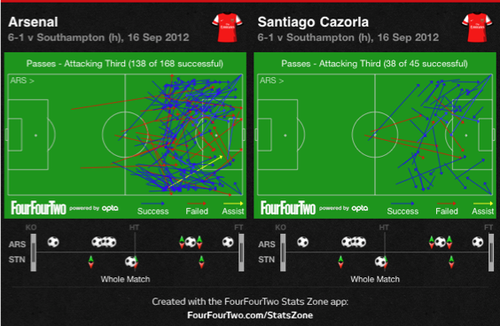
It is a similar role to that of which Tomas Rosicky played at the tail end of last season. “When we have the ball I am starting quite close to Robin [van Persie] up front,” said Rosicky in the midst of his fantastic run of form, “and after that I can come a bit deeper and stretch the pitch out.” While Van Persie’s departure to Manchester United and Rosicky’s injury has seen new personnel take the pitch, it seems Wenger’s vision for his side is finally coming together. Cazorla’s impact has been pivotal.
Atypically, Arsenal has conceded the joint least in the Premier League this season. While that may be a misleading statistic as Arsenal have come up against two of the most pragmatic and deep-lying sides in the division (Sunderland and Stoke), it is still indicative of an unusual trait of defensive miserliness, one which we would normally not associate with Arsene Wenger’s side. It has been easy for many to point to the promotion of Steve Bould as a causation of Arsenal’s newfound austerity, and while this is almost certainly a valid explanation, the answer lies deeper.
While the attacking phase is characterized by a fluid interchange of the advanced quartet, they adopt a far more practical, rudimentary 4-4-2 in defence, characterized by deep positional depth and the formation of a midfield wall. Mikel Arteta and Alou Diaby form shields in the centre, while the wide players playing narrow and creating two tight banks of four. Wenger appears to still be searching for the right combination, but he knows his left side is more or less settled, with Podolski, Cazorla and full back Kieran Gibbs all combining well, with the latter in particular storming forward effectively in the first half of their clash with Manchester City.
It is unusual to see Arsenal dropping deep and forming such a rigid structure, but it’s certainly been effective, and the intelligence of Cazorla is the key. When a player is caught out of position, Cazorla is astute enough to take up positions away from his central position, ensuring that the structure remains intact, and revealing his tactical discipline and importance to Arsenal’s system.
Last season was characterized by a dependence on Robin Van Persie and a midfield that lacked definition. Now there is a clear purpose to Arsenal’s style of play and a structure which should serve them well for the season ahead. It would be remiss to say that the loss of Robin Van Persie has improved Arsenal, but it has definitely seen a return to the ideal of the collective that Wenger has always aspired to. Should Arsenal’s new found defensive restraint be able to withhold the potent Manchester City attack, Cazorla will certainly be found at the heart of victory.
Tim Palmer writes about tactics under his feature ‘Notes from the sideline’. You can follow Tim on Twitter @timhpal. Comments below please


